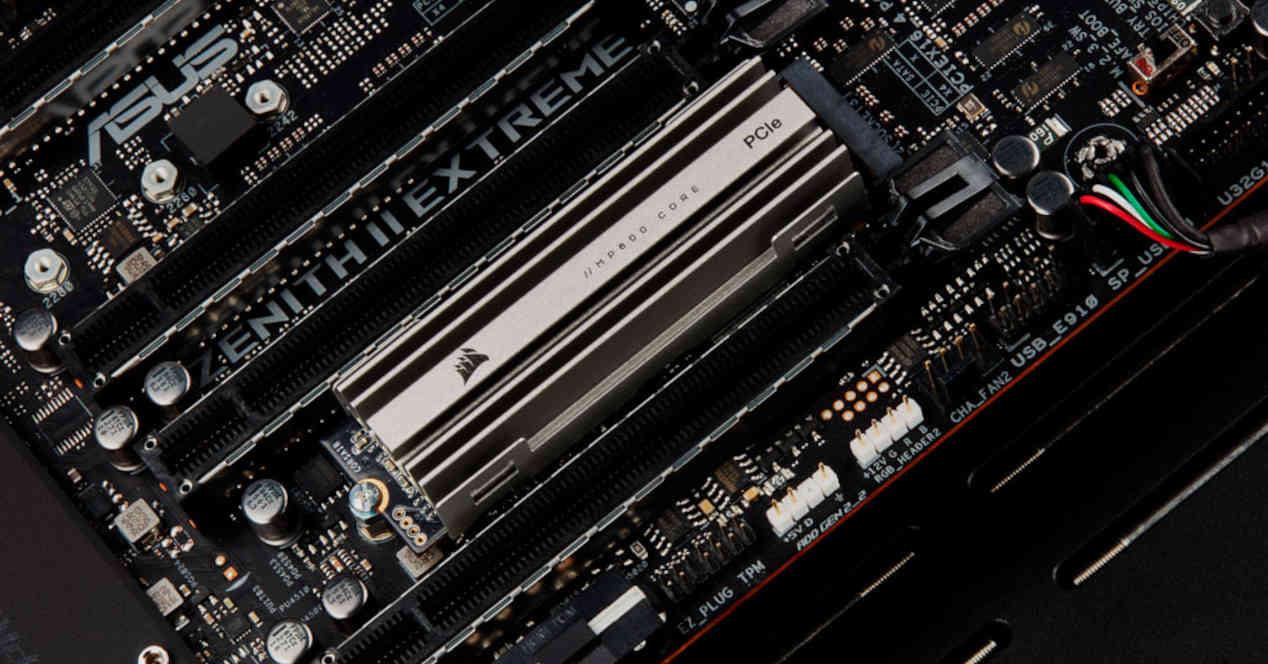Phison is one of the most acclaimed and recognized flash controller manufacturers on the market, so he is very familiar with the advancements and issues to be addressed in the future of NVMe SSDs. Well, thanks to a live broadcast we were able to find out what the evolution of this type of storage will be and they confirm a good part of the predictions that we have made from here lately regarding the advancement of the hardware.
When will we see the next generation of NVMe SSDs?
From the mouth of the technical director of Phison, Sébastien Jean, we were able to know that it will be in 2022 that we will start to see NVMe PCI Express 5.0 SSDs. As for the generation that will come later, given that it takes three years to deploy new technology compared to the previous one, it is expected that NVMe SSDs that use PCIe Gen 6
Also commented on how the API Direct storage Microsoft will mark a before and after in the use and performance of SSDs in the PC, remember that one of the capabilities is that they allow direct access to the NVMe SSD to the graphics card without having to depend of the processor, which gives practically a large amount of video memory and is ideal not only in games, but also in the professional world.
NVMe SSD as RAM and L4 cache
One of the enhancements made by PCI Express 5.0 is the Compute Express Link, an extension that adds consistency in memory addressing to all components connected through PCI Express. Well, PCI Express 5.0 compatible flash controllers can communicate with 14 GB / s, a bandwidth equivalent to a single channel of DDR4-2133 memory. Sébastien Jean’s prediction? Since SSD and RAM will work in the same memory space, an L4 cache is needed for consistency between SSD and RAM in addressing.
Let’s not forget that the existence of NVDIMM-P modules that combine RAM and on-chip NAND Flash memory is not only a reality, but we have, for example, AMD patents that refer to the use of this memory. and without leaving that of Lisa Su either we must forget another of their patents where they speak of an L4 cache. We are very sure that Intel will also follow these steps and that the red mark will not go on its own. Has Phison’s CTO slipped in the future? It is more than possible.
The way in which the CXL It allows memory expansions through the PCI Express port, so unified addressing will not only occur with mixed DIMMs in terms of memory type, but also with NVMe SSDs connected to PCI Express ports.
The future of NVMe SSDs
What interests us is how NVMe SSDs will evolve in the near future and one of the most important points is cooling, it is no secret that the power consumption of the PCI Express port increases to each generation of the interface and this implies an increase in the heat generated. If, with version 4.0 of the standard, the use of passive dissipation is recommended, as is the case with the PlayStation 5, with the use of versions 5.0 and later, it will be necessary to use heat sinks active. Apparently, the power consumption of an NVMe Gen 5 SSD is 14W
Another point they talked about is reducing the number of PCI Express lanes and lanes used, which will not only allow much smaller and cheaper flash controllers, but also more compact storage units. Currently, the only storage units with a PCIe interface that use two lanes are the so-called CF Express Type B used in some Xbox Series video cameras and memory cards. So this opens up the possibility of high performance 1.8 inch storage drives, as until now they have only existed with a SATA interface of this size.
Finally, and although this is not new, we will see its storage capacity increase, but we will see NVMe SSDs with TLC cells focusing on the gaming market and QLC for the lower ranges.










